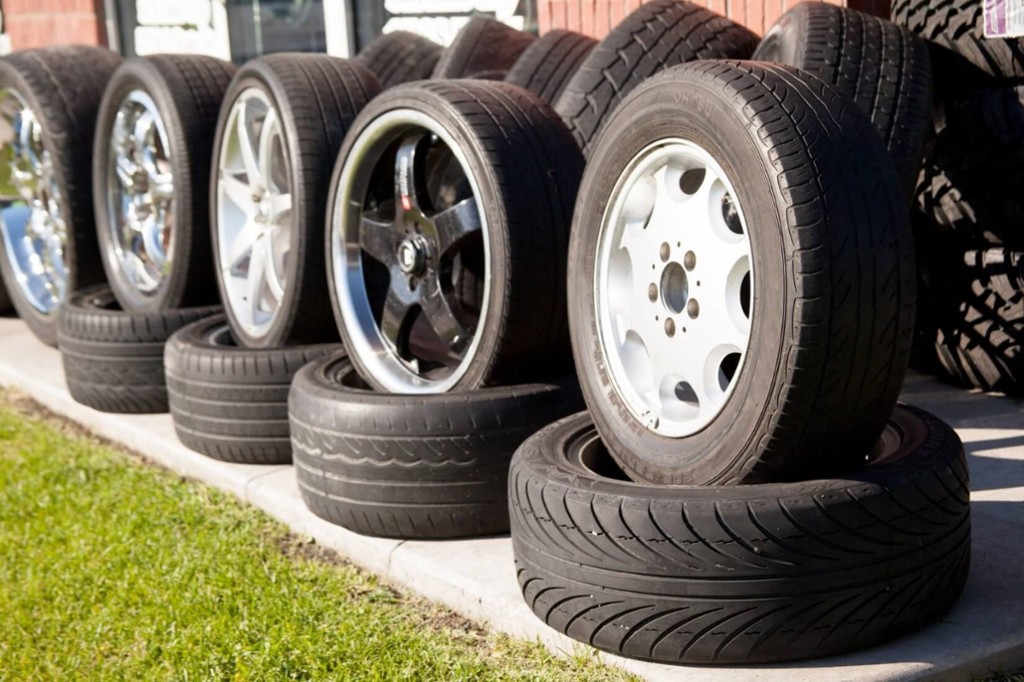Whether or not you’ve prepared to buy new tires for your car, the price of new tires will likely come as a shock. Really, it should be too much  of a surprise, because we know tires wear out, just like brakes and engine oil wear out, but they take so long to wear out that we forget about them. Also, because they take so long to wear out, people simply forget to budget for them, perhaps dipping into the maintenance fund for more immediate needs. Still, whether you are prepared or not, you have some choices when it comes to what kind of tires you can use. Prices can range from low-budget $100 tires to expensive ultra-high-performance or specialty name-brand tires, $450, mounted and balanced.
Should you spend more or less on tires? Unfortunately, the answer isn’t easy to define, because there are many factors that influence the price of a tire:
of a surprise, because we know tires wear out, just like brakes and engine oil wear out, but they take so long to wear out that we forget about them. Also, because they take so long to wear out, people simply forget to budget for them, perhaps dipping into the maintenance fund for more immediate needs. Still, whether you are prepared or not, you have some choices when it comes to what kind of tires you can use. Prices can range from low-budget $100 tires to expensive ultra-high-performance or specialty name-brand tires, $450, mounted and balanced.
Should you spend more or less on tires? Unfortunately, the answer isn’t easy to define, because there are many factors that influence the price of a tire:
- Size – Tires in the 15-17-inch range are generally less expensive than tires in the 18-22-inch range.
- Brand – Bigger brands, such as Michelin tires and Pirelli tires are the most expensive, while Compass and Telluride are cheap alternatives (perhaps dangerously so?). In the middle of the spectrum, Kumho and Yokohama are neither cheap nor expensive. OEM (original equipment manufacturer) tires usually range in the middle of the price range, as well.
- Performance Rating – All-Season Tires are generally the cheapest, while specialty tires, such as Snow Tires, Mud Tires, or Summer Tires, are more expensive. High performance and ultra-high-performance summer tires and race-type tires are the most expensive.
- Warranty – Similar to branding, warranty structure typically follows tire price and brand prestige. In the end, customer satisfaction is everything, and better warranties back up better performance.
There are also other factors affecting tire price, but when it comes to choosing the best tires for your ride, the best advice is to choose the best tires you can afford. Of course, if it’s a choice between cheap-o tires and the bald tires you already have, then go for the cheap-o tires. On the other hand, cheap tires might not perform as well, deliver a smooth ride, or last very long, and you’ll soon be back to buying new tires. If you budget responsibly, AAA suggests setting aside $50 to $80 per month in a separate savings account for automotive maintenance and repairs, you’ll have enough to buy a quality tire, for better ride quality, traction, safety, and longevity.
Essentially, when it comes to expensive tires, the adage, “you get what you pay for,” is generally true. Budget tires deliver only the very basics of tire function, OEM tires will deliver the ride quality and traction your car had from the factory, and expensive tires will accentuate one or more performance aspects while diminishing others. In the end, you need to choose the right balance between your budget, desired performance, and lifespan. If you have any doubts, ask do your research, read reviews, and ask your local retailer – they sell thousands of tires a year, and their business thrives on customer feedback. You can save a lot of money by not buying the most expensive tires, but it doesn’t make sense to sacrifice safety and longevity for a set of cheap-o tires.

 of a surprise, because we know tires wear out, just like brakes and engine oil wear out, but they take so long to wear out that we forget about them. Also, because they take so long to wear out, people simply forget to budget for them, perhaps dipping into the maintenance fund for more immediate needs. Still, whether you are prepared or not, you have some choices when it comes to what kind of tires you can use. Prices can range from low-budget $100 tires to expensive ultra-high-performance or specialty name-brand tires, $450, mounted and balanced.
Should you spend more or less on tires? Unfortunately, the answer isn’t easy to define, because there are many factors that influence the price of a tire:
of a surprise, because we know tires wear out, just like brakes and engine oil wear out, but they take so long to wear out that we forget about them. Also, because they take so long to wear out, people simply forget to budget for them, perhaps dipping into the maintenance fund for more immediate needs. Still, whether you are prepared or not, you have some choices when it comes to what kind of tires you can use. Prices can range from low-budget $100 tires to expensive ultra-high-performance or specialty name-brand tires, $450, mounted and balanced.
Should you spend more or less on tires? Unfortunately, the answer isn’t easy to define, because there are many factors that influence the price of a tire: